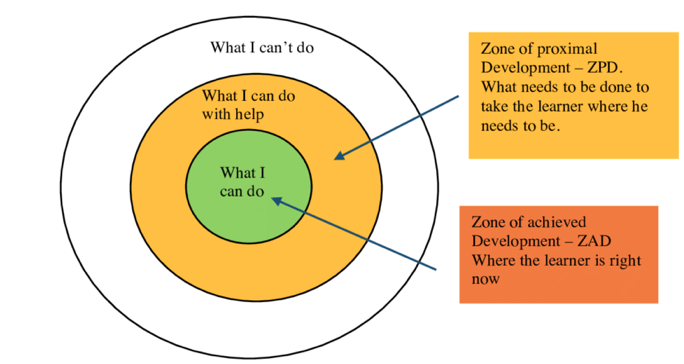This is the fourth blog of a five part series that provides you with tips that I have learned about teaching kindergarten. These tips have helped me as I prepare for student teaching this January in yes…Kindergarten! If you work with kinders or are interested in learning about supporting the needs of the whole child in an early learning setting, I hope this blog series helps you too!
Tip #4: Know the Learning Progressions for Mathematical Reasoning
In Kindergarten, you must follow a logical progression for teaching math. A learning trajectory for each standard should move from simple to more complex skill development. This allows students the opportunity to gain conceptual knowledge for problem solving. Each learner will develop early math skills differently. Therefore, it is crucial to consider scaffolded learning based on the zone of proximal development or “ZPD.” ZPD is “The difference between the level of prospective development determined by problem-solving under adult guidance or in cooperation with more capable peers at the level of actual development as determined by independent problem solving.” (Vygotsky, 1987). 
ZPD is the ”just right place” for a student to acquire new knowledge at just the right level of application without overwhelming the child with too many challenges that negatively impacts the learning process. Usually this comes from the teacher observing a student as they engage in learning to determine what they have under control and the exact place they need to go next in the learning progression for knowledge to be maintained and understood. Beyond the ZPD level, a youngster cannot learn mathematical concepts on their own. Even with expert instruction, some things are beyond the scope of students. Simply put, these things are beyond what a child is capable of. Therefore, teachers must choose tasks that are below the learner’s ZPD level for the purpose of practice, automaticity, and fluency and in the ZPD when they are reading for the next natural progression of learning to occur. Using this theory in early mathematics reduces stress and disengagement with a task is at a level of “too difficult”, when a student would shut down and not be able to meet expectations.
Did you know that a student’s skills development is based on two stages:
- A level that they can achieve themselves
- A level that they can achieve with the support of a person
more informed than them
Here are some great resources to help us better understand how to use Vygotsky/s ZPD theory to teach kindergarten math,
Math Learning in the Zone of Proximal Development
Vygotsky Scaffolding: What it Is and How to Use It
Happy Teaching!
